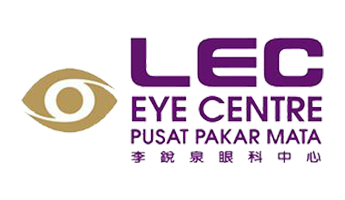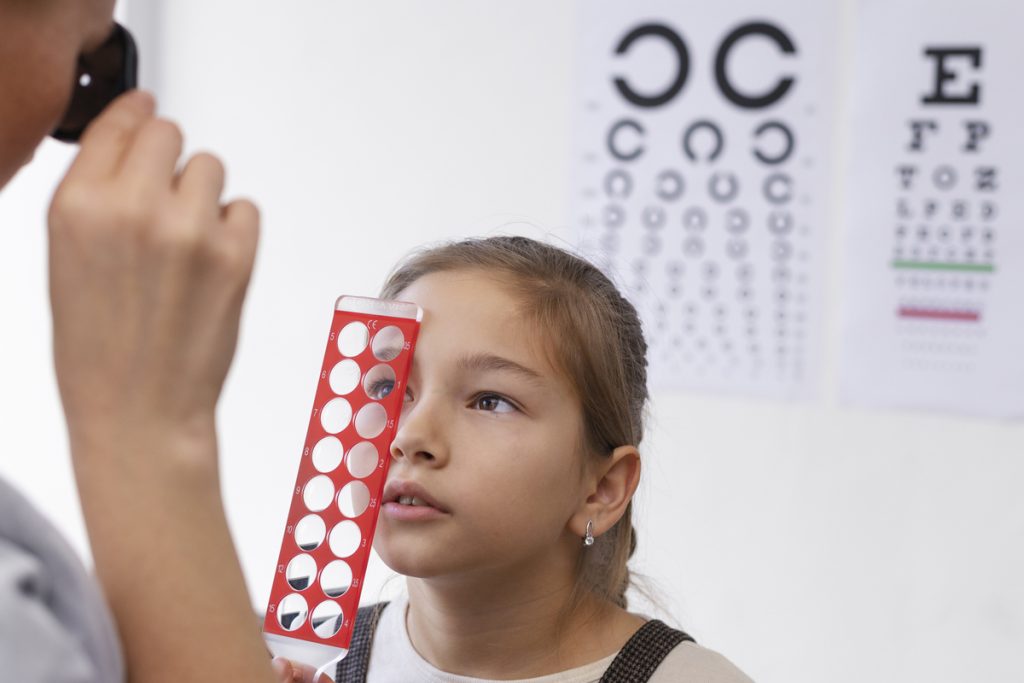Advanced Clinical Services for Children’s Eye Disorders
Risk factors
Most commonly, a tendency to have some type of squint is inherited. If any members of your family have had a squint, the condition is more likely to develop in your child.
Sometimes the condition is due to the eyes being far-sighted and the need for corrective eyeglasses or, occasionally, to some muscle abnormality. Very rarely, squint may be secondary to a serious abnormality inside the eye, such as a cataract or growth inside the eye.
Treatment
The aim of treatment is to restore good vision to each eye and good binocular vision. Treatment usually includes patching the eye that is always straight to bring the vision up to normal in the squinting eye.
Glasses may be used, particularly for eyes that are out of focus. Glasses may also help straighten the eyes. Surgery on the eye muscles is sometimes necessary as a last resort.
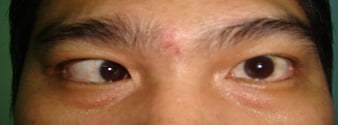
An in-turning squint also known as esotropia
Treatment of congenital cataracts
Some congenital cataracts impair visual development only to a small degree and may never require surgery. However, removal of the cataractous lens by surgery is the most effective means of treatment in most cases.
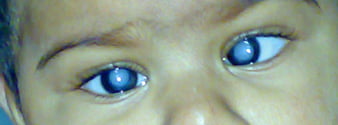
“White reflex” seen in child with congenital cataracts
Frequently Asked Questions (FAQs)
Answers to Your Frequently Asked Questions: Clearing Up Common Queries
Amblyopia is a disorder in which the eye appears structurally healthy but vision is abnormal. The disorder begins in childhood and could be due to some type of developmental abnormality such as:
- An eye that appears to turn in or out. (squint or strabismus)
- Significant differences in visual ability (acuity) between the right and left eyes
- High uncorrected amounts of refractive error
Treatment of amblyopia is thought to be most effective up to about ages of 6 to 9, while the visual pathways in the brain are still actively developing, so early detection is important. A thorough eye examination is needed to diagnose this condition. The eye care professionals will perform a visual acuity check in both eyes, using a standard eye chart to determine whether the child’s vision is normal. He or she will also ask the child to follow a moving object, such as a pen or finger, in order to observe how well the child’s eyes track together. Tests will also be done to check the “power” of the eyes (refraction).
Squint, also known as crossed or turned eye, is the medical term used when the two eyes are not straight.
A child may be born with this condition, or it may develop within a few months of birth or up to 5 years of age.
The Signs include:
- Turned or crossed eye
- Squinting
- Head tilting or turning
- Double vision (in some cases)
Retinopathy of Prematurity (ROP) is a disease of the retina affecting prematurely born babies. Growth of retinal blood vessels is usually completed in utero but when the baby is born prematurely, this process is interrupted. This process of vascularisation then progresses abnormally resulting in the formation of scar tissue and potentially, retinal detachment. Supplemental oxygen which is given to the premature baby also has a role in causing further abnormal vessel growth.
Diagnosis is made during an eye examination either before the infant leaves the hospital or within five to seven weeks of birth. Screening is recommended for all premature and low-birthweight babies, especially those receiving supplemental oxygen.
A congenital cataract is an opacity (cloudiness) of the lens of the eye that is present at, or develops shortly after birth. (Figure 2) A cataract blocks or distorts the image that would normally reach the retina. During the first five to seven years of life, a clear image is required in order for the connections between the eye and the brain to develop normally. Thus, a congenital cataract causes the immature visual system to be deprived of the stimulation needed for normal development and if left untreated, permanent visual loss may occur.
The Signs Are:
- Clouding of the lens, often evident at birth without special viewing equipment and appearing as a whitish discoloration in an otherwise normally dark pupil
- Failure of an infant to show visual awareness of the world around him or her (particularly when present in both eyes)
- Nystagmus (unusually rapid spontaneous eye movements)
- No symptoms may be present if the cataract occurs only on one side or is not severe. This can often be overlooked without a proper eye examination and does not mean that treatment is not required.
Hyperopia (farsightedness) means the eyes are out of focus more for near than for distance. A very farsighted child may have blurred vision at distance and at near. In a moderately farsighted child, he/she may see well at distance and near but experience eyestrain or crossed eyes when focusing (accommodating) to compensate for the uncorrected need for glasses.
On the other hand, myopia (nearsightedness) means the eyes are out of focus more for distance than for near. If a child is very nearsighted, things will be blurry both at distance and at near. Some children are extremely myopic (nearsighted) at a young age. By age two or three, they will be sitting very close to the TV and holding objects up close to their face. These children usually take readily to glasses and like to wear them without much adjustment.
The most common form of nearsightedness, where vision is better at near than distance, does not begin until about age five to seven or sometimes later. Nearsightedness usually increases in amount every year as the child grows, with the greatest changes occurring between ages 6 and 12, but many continue to become more nearsighted as teenagers. In general, the earlier the nearsightedness begins, the more nearsighted the child will become.
The term astigmatism means that the eye is shaped oval like a rugby ball instead of the normal round shape like a basketball. Infants often have small or even moderate amounts of astigmatism that may simply disappear and need no treatment. Children, ages one to three, who have large amounts of astigmatism will need to wear glasses. Others with only small amounts of astigmatism may not require glasses at all. Sometimes the astigmatism goes away by itself, but other times glasses are needed at an older age for reading and schoolwork.
It is extremely important that children be prescribed the appropriate glasses so they will develop normal vision while they are still growing. Some children require glasses for all waking hours, while others whose eyes are only slightly out of focus may be best served by not wearing them at all. Children nowadays are exposed to “near activities” from a very young age; they are encouraged to read more, they have various mobile devices to play with (e.g. iPad), they need to learn computer knowledge, they have their game consoles(X Box, Playstation) and they watch television a lot! All these activities have been shown to increase the risk of developing myopia and studies have shown that reducing near activities and encouraging more outdoor activities will have a beneficial effect.
Checking the power (refraction) in children can be challenging as they may not be cooperative enough to get an accurate result. It is very common that the ophthalmologist or optometrist will first instill some eyedrops into the child’s eyes to dilate and “relax” the focusing muscles in order to obtain an accurate refraction. This is because in children, the accommodative effort (focusing ability) is very strong and this can cause significant errors in refraction which could result in the child getting the wrong prescription for his/her glasses.
Considering that the life expectancy of a child born today is probably more than 80 years, an early eye exam or screening test is an excellent investment for life. Most parents will have already their child’s teeth checked by age three or four. An eye exam for children is just as important, for unlike teeth, eyes cannot be replaced.
Childhood Glaucoma – Glaucoma is a condition that is associated with high pressure within the eye. This pressure can damage the optic nerve, which is critical for vision, resulting in permanent vision loss. Pediatric glaucoma is a rare condition that can present in the newborn or during childhood. Signs and symptoms of pediatric glaucoma include cloudy cornea, tearing, frequent blinking, light sensitivity, and redness of the eye
Childhood Tearing – Childhood tearing is often noted soon after birth, but can be acquired later. When noted during infancy, it is usually due to blockage of the tear drainage system. This type of tearing often improves spontaneously by 6-12 months of age. Medical treatment includes tear sac massage and eyedrops, but if tearing persists, surgical probing of the drainage system may be required. Other rare causes of childhood tearing include childhood glaucoma, infections and eye surface diseases.
Retinoblastoma : is a tumour or growth that occurs in the retina. The retina is the light-sensitive lining of the eye. Some children with retinoblastoma may have no symptoms, but it will be picked up by screening in children of families with a history of the condition.
If there is no family history of retinoblastoma, the first sign of the condition is often a white pupil that does not reflect the light (cat’s eye reflect). This may be detected when a picture of your child is taken using flash photography. The affected eye may look white in the photograph. Some children may have a squint, or if the tumour is large, they may have a painful red eye.
Allergy means that the immune system over-reacts to something which causes inflammation/ swelling.What are the symptoms of allergic conjunctivitis?
- Both eyes are usually affected and symptoms tend to develop quickly.
- The eyes are usually itchy, and the whites of the eyes look red or pink.
- A burning feeling may occur, but the eyes are not usually painful.
- The eyelids tend to swell.
- The eyes water more than usual, but do not become too gluey as in infective conjunctivitis.
- Vision is not affected.
- In severe cases the conjunctiva under the upper eyelids may swell and look lumpy.
These are only a summary of some of the diseases which can affect a child’s eye and vision. As a child often times is not able to communicate any visual problems to their parents, it is vital that all parents be aware of the potential eye problems a child may face and seek appropriate help as soon as possible.
More Related Topics
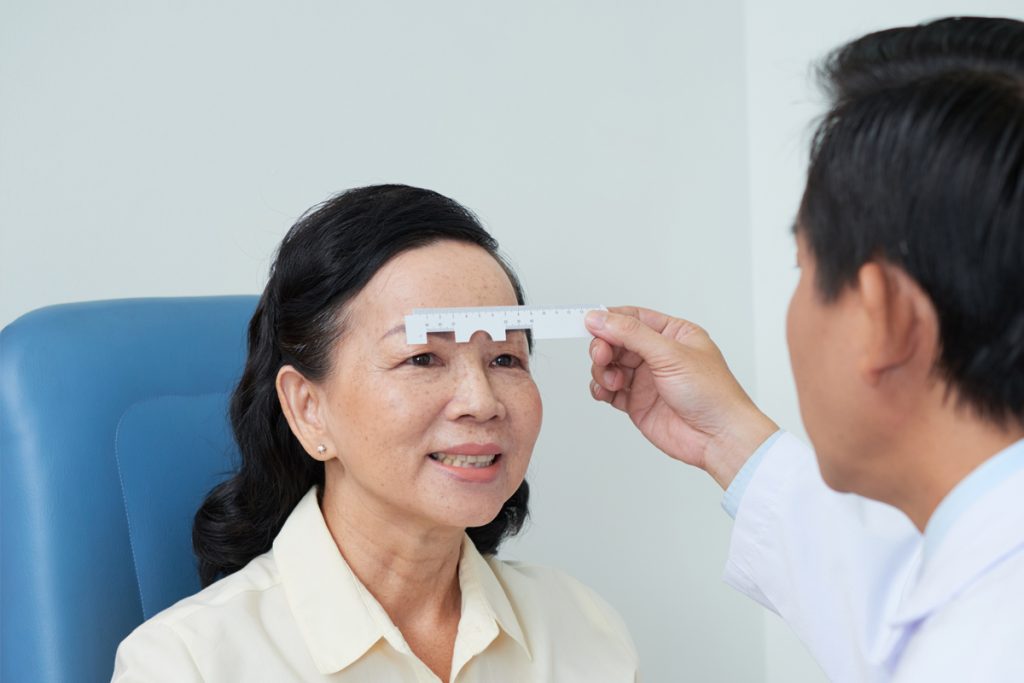
Cataract

Glaucoma

Diabetic Retinopathy

Retinal Diseases & Vitrectomy

Cataract

Glaucoma

Diabetic Retinopathy

Retinal Diseases & Vitrectomy
Get In Touch
If you are interested in talking to us about our clinical services, please send us a message.
